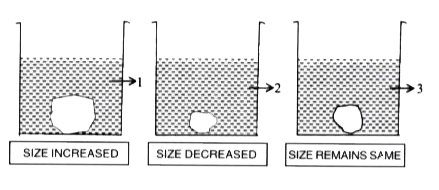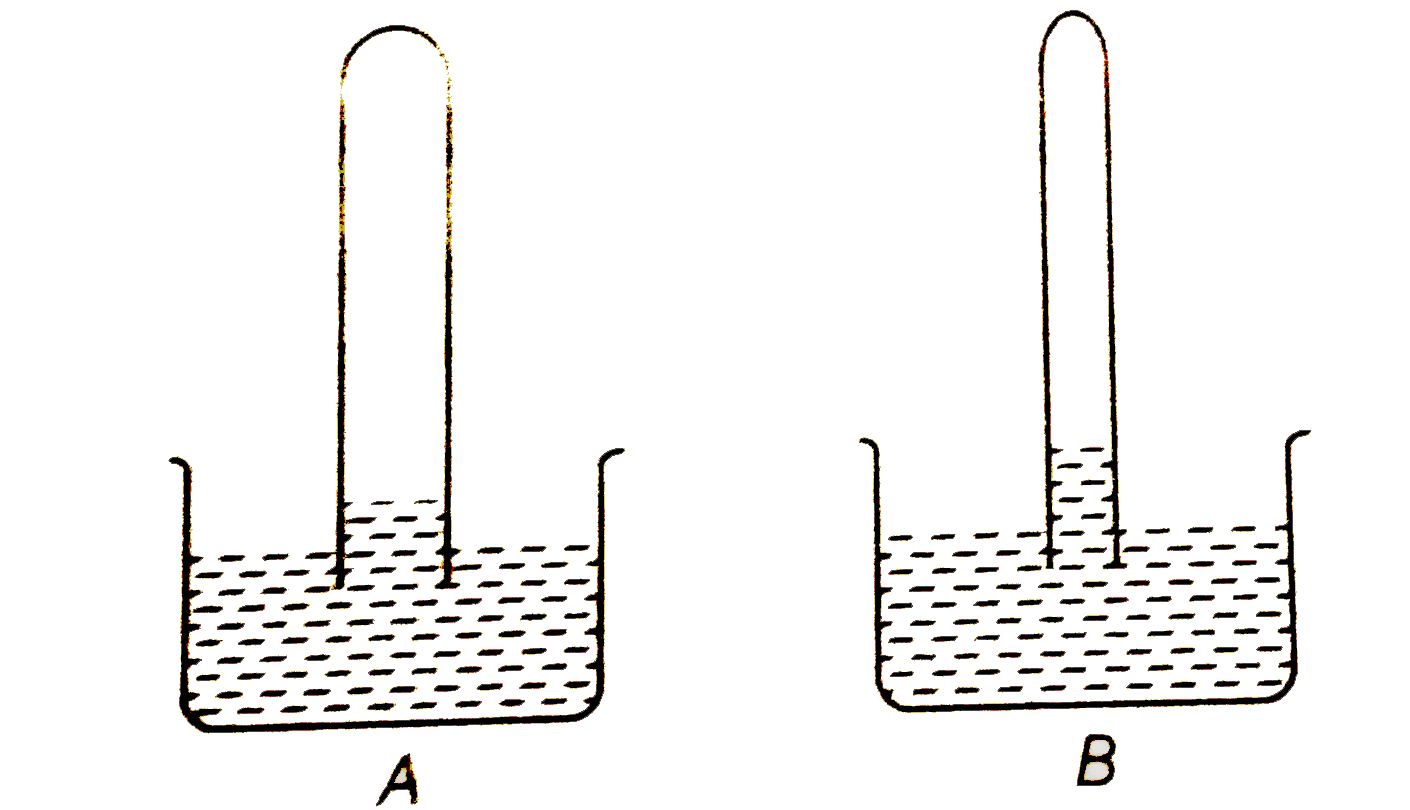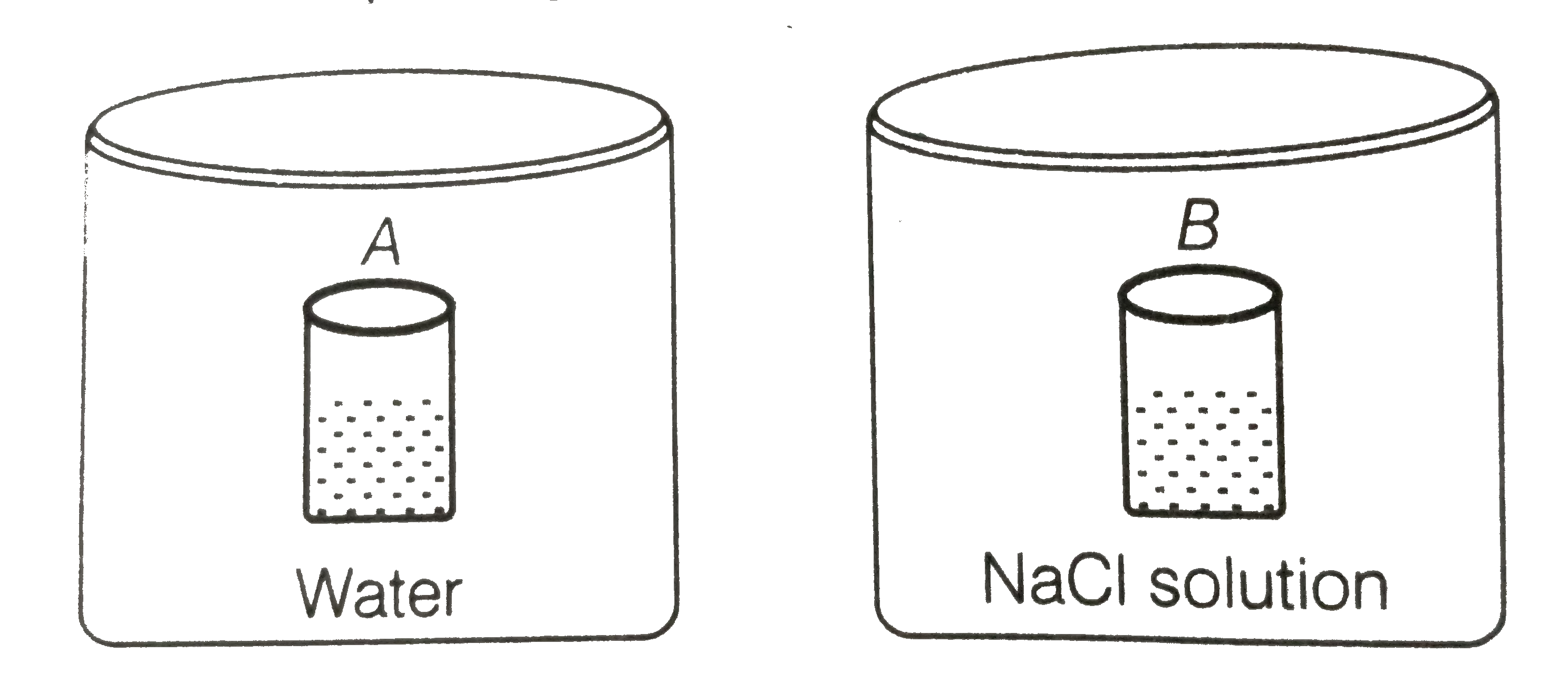Grapes placed in three beakers X ,Y and Z containing different type of solutions are shown in figures.

If beaker X contains water, Y and Z contain
Y-hypotonic solution , Z-hypertonic solution
Y-hypertonic solution, Z-hypotonic solution
Y and Z -isotonic solutions
Y and Z - hypotonic solutions
The correct Answer is:A
In hypotonic solution, the water is drawn in and the grape swells while in hypertonic solution the water is drawn out and the grape shrinks
Topper's Solved these Questions
- SOLUTIONS Book:NCERT FINGERTPS ENGLISHChapter:SOLUTIONS Exercise:Abnormal Molar Masses
Explore 16 Videos
- SOLUTIONS Book:NCERT FINGERTPS ENGLISHChapter:SOLUTIONS Exercise:Higher Order Thinking Skills
Explore 10 Videos
- SOLUTIONS Book:NCERT FINGERTPS ENGLISHChapter:SOLUTIONS Exercise:Ideal And Non-Ideal Solutions
Explore 13 Videos
- PRACTICE PAPER -3Book:NCERT FINGERTPS ENGLISHChapter:PRACTICE PAPER -3Exercise:Practice Paper 3
Explore 50 Videos
- SURFACE CHEMISTRYBook:NCERT FINGERTPS ENGLISHChapter:SURFACE CHEMISTRYExercise:Assertion And Reason
Explore 15 Videos
Similar Questions
A candidate in order to study the process of osmosis has taken 3 potato cubes and put them in 3 different beakers containing 3 different solutions. After 24 hours, in the first beaker, the potato cube increased in size, in the second beaker, the potato cube decreased in size and in the third beaker there was no change in the size of the potato cube. The following diagram shows the result of the same experiment :

Give the technical terms of the solutions used in beakers, 1 , 2 and 3 .
View SolutionWe have three beakers A , B and C containing glycerine, water and kerosene respectively. They are stirred vigorously and placed on a table. The liquid which comes to rest at the earliest is
View SolutionThree different containers contain three different gases with following parameter
Container 1 of 67.2 L containing gas X at 0∘C and 1.01325 bar
Container 2 of 44. 8L contaning gas Y at 546 K & 760 mm of Hg
Container 3 of 89.6 L containing Z gas at 101325 N/m2&0∘C
Now they are mixed in single container. If gram molecular mass of X ,Y & Z are 10 g/mol, 20 g/mol and 40 g/mol respectively Then which of the following statements are correct
View SolutionTwo beaker A and B present in a closed vessel. Beaker A contains 152.4 g aqueous soulution of urea, containing 12 g of urea. Beaker B contain 196.2 g glucose solution, containing 18 g of glocose. Both solution allowed to attain the equilibrium. Determine mass % of glocose in its solution at equilibrium allowed to attain the equilibrium :
View SolutionIf you are provided with two tubes (A and B), where one is narrow and the other is relatively wider and if both are immersed in a beaker containing water as shown in the figure.

Why does B show higher water rise than A ?
View SolutionTwo open beakers one containing a solvent and the other containing a mixture of that solvent with a non volatile solute are together sealed in a container. Over time:
View SolutionLead spheres of diameter 6 cm are dropped into a cylindrical beaker containing some water and are fully submerged. If the diameter of the beaker is 18 cm and water rises by 40 cm. Find the number of lead spheres dropped in the water.
View SolutionSmall quantities of compounds TX, TY and TZ are put into separate test tubes containing X, Y and Z solutions. TX does not react with any of these. TY reacts with both X and Z. TZ reacts only with X. The decreasing order of ease of oxidation of the anions X−,Y−andZ− is
View SolutionTwo beakers of capacity 500 mL were taken. One of these beakers, labelled as "A" was filled with 400 mL water whereas the beaker labelled "B" was filled with 400 mL of 2M solution of NaCl. At the same temperature both the beakers ware placed in containers os same material and same capacity as shown in figure.

View SolutionTwo beakers of capacity 500 mL were taken. One of these beakers, labelled as "A" was filled with 400 mL water whereas the beaker labelled "B" was filled with 400 mL of 2M solution of NaCl. At the same temperature both the beakers ware placed in containers os same material and same capacity as shown in figure.

View Solution
